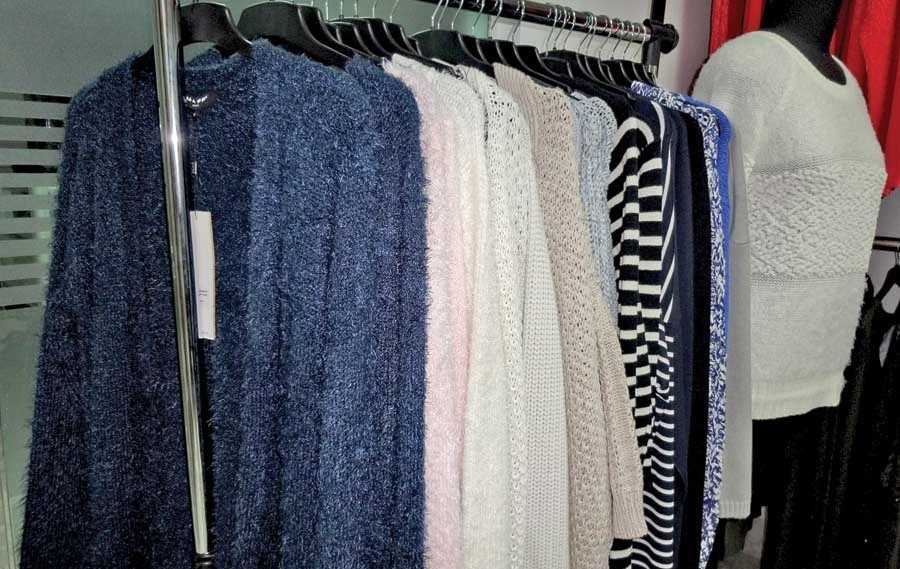Capitalising on the strengthening competence of Bangladesh in sweater manufacturing, Natex Bangladesh Ltd., a liaison office of a Danish company catering to all major retailers in Denmark such as DKC, besides sourcing for some private labels, is also exclusively sourcing sweaters in a wide variety from the country. Having brands like Fransa, Be-on, Coup under its umbrella, Natex also has its own in-house brand ‘Leepu’ which is manufactured in Bangladesh. Deepak Joshi, a part of the core management group at Natex and the person behind the Bangladesh operations, talks about the sweater industry in Bangladesh and how he has developed the value-added business in sweaters…
Following the basic business pattern of its parent company, Natex is responsible for developing designs and supporting operations of its dedicated vendors to ensure that the relatively small quantities required by its buyers are met by the vendors. On an average 50 designs are created every month in Denmark, and to prop up the effort, Natex initiated a sample unit in 2011 where 20 skilled workers make samples on 16 knitting and linking machines, with a monthly capacity of 4,000 pieces. “Since we do not have big volumes but assure work round the year, we have under our wing 4 medium-sized factories with which we work very closely right from production to packaging. We provide them yarns, accessories, everything, they are responsible for, only to manufacture and deliver on time,” informs Deepak. As of today the buying offices is sourcing about a million pieces of sweaters worth US $ 5 million per annum.

Though Natex has a long 15 year sourcing relation with Bangladesh, it opened its liaison office in Dhaka only about three years back. “Traditionally we were sourcing from China where we also have our own factory and with Bangladesh becoming critical in the sourcing matrix we tried to have the same module in Bangladesh but it didn’t work for the company, so instead we have developed partners,” says Deepak. He adds that while in China all the sweater manufacturing factories have fully automated machines, Bangladesh is now gradually moving towards these automated machines, which actually adds to the potential of the country, as it has all the options for the buyers in sweater knitting – hand flats, semi automated and fully automated machines.
Committed to develop its vendor base, Natex is also open to support them monetarily for improvement. “Last year we gave US $ 100,000 to one of our vendors as he wanted to make a new floor so that he could have separate lines for finer gauge and thicker gauge sweater production,” shares Deepak who is also striving hard to make his vendors BSCI certified. The most recent was Hanna Fashion which was BSCI certified in 2013.
“Ninety per cent of yarns are sourced locally, while the more differential ones are sourced from China and dyed in Bangladesh. We source cotton, cotton-acrylic, cotton-acrylic-wool, fancy yarns, slub yarns. We also do viscose-nylon, which is tough here, but if I commit a decent amount say 50,000 tonne then even the local mills are ready to give the yarns.”
Though innovation in sweaters is still a relatively new concept in Bangladesh Natex has through its intervention sourced some very design-driven products in the last few years. “We get sweaters with sequins work, patches, zippers, etc. made from the country, though the ones requiring very intricate surface ornamentation are still coming from China,” shares Deepak. Taking advantage of local resources, the effort is to work with yarns produced in Bangladesh. “Ninety per cent of yarns are sourced locally, while the more differential ones are sourced from China and dyed in Bangladesh. We source cotton, cotton-acrylic, cotton-acrylic-wool, fancy yarns, slub yarns. We also do viscose-nylon, which is tough here, but if I commit a decent amount say 50,000 tonne then even the local mills are ready to give the yarns,” informs Deepak.
As the capabilities of the country are improving so are the sourcing volumes by Natex. “In first year we sourced 300,000 pieces, in second year around 700,000 and this year the company has crossed one million pieces. Perhaps next year it would be 1.5 million pieces and now we are putting up a new woven tops project with half a million pieces,” concludes Deepak proudly.

Post a Comment